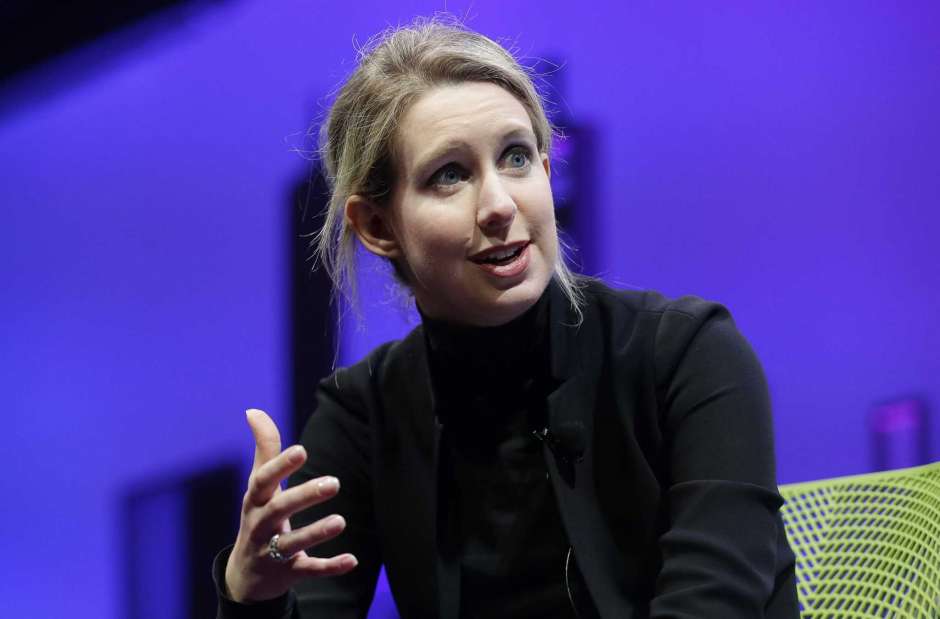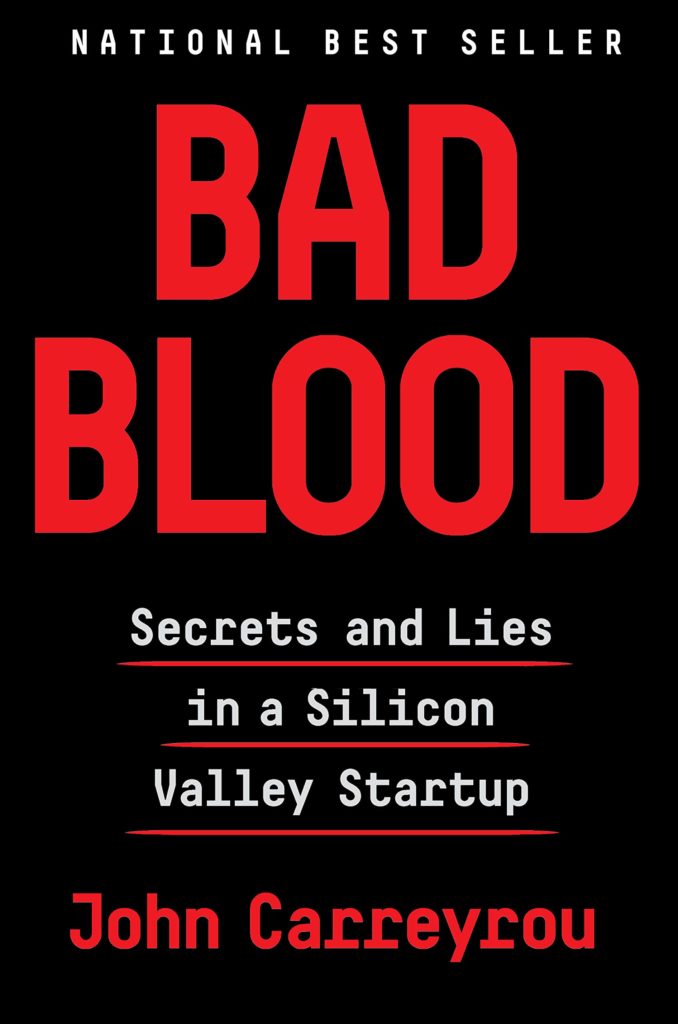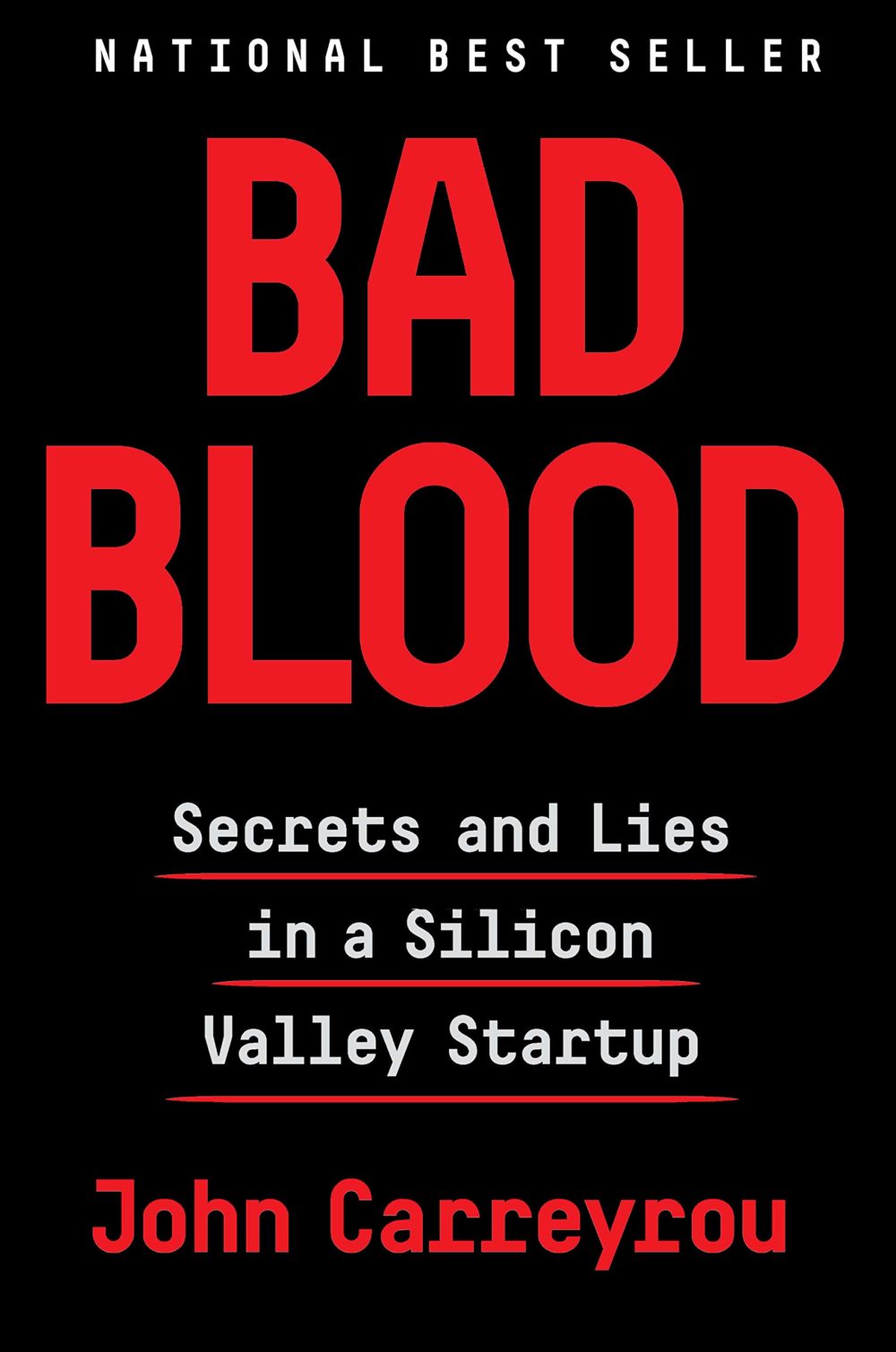I recently finished the best business book I’ve read in the past year, John Carreyrou’s Bad Blood: Secrets and Lies In a Silicon Valley Startup, about the rise and fraud of healthcare technology firm Theranos.

At its peak, prior to the fraud exposure, the company inspired awe. Stanford dropout and founder Elizabeth Holmes channeled Apple founder Steve Jobs. She presented Theranos as the next world-changing company, able to quickly and cheaply conduct hundreds of diagnostic tests with a single drop of blood from a nearly painless finger stick.
Blond, steely blue-eyed and with a deep voice, dressed all in black (like Jobs), Holmes was a self-made startup billionaire rose surrounded by Silicon Valley thorns. She graced the covers of magazines like Forbes, Fortune, Inc, and even T, The Times Style Magazine, all by age 31.
Holmes owned half of Theranos, then valued by investors at $9 billion, and was counted with her $4.5 billion paper fortune as the youngest self-made woman on the Forbes 400 list in 2014.

Her governance board and venture capital investors included a Who’s Who of powerful men in finance, politics, the military, and media. Members of her board included former Secretary of State Henry Kissinger, Former Senate Majority leader Bill Frist, former Secretary of Defense James Mattis, former Secretary of Defense William Perry, former Secretary of State George Shultz, former Senator Sam Nunn, former Wells Fargo CEO Richard Kovacevich, and super-lawyer David Boies. Oracle Software founder Larry Ellison poured in millions early on, and media mogul Rupert Murdoch invested $125 million in Theranos in March 2015.
Ten years of apparent astonishing success began to unravel in October 2015 with a deeply reported Wall Street Journal investigation casting doubt on the technology and the company’s methods.
What we know now is that the technology never reliably worked. Theranos falsified testing of its methods and faked demonstrations. They risked patients’ health by reporting unreliable data.
The Tools of Fraud
Most interesting to me is the story of how Holmes and her top deputy built an information and security apparatus over ten years to quash dissent, isolate and eliminate naysayers.
Holmes invested deeply in information technology security professionals to purportedly plug leaks, claiming the company paranoia was necessary to prevent technology secrets from getting out to competitors. Employees soon learned they were under very tight IT surveillance. In retrospect, the secrecy and paranoia make sense because that’s what you have to do to maintain a long con.
Holmes had a clear pattern of lying, often about seemingly smallish things. She lied about her primary romantic relationship, with her deputy. She lied to prospective pharmacy clients about the progress of the technology. She lied during early beta-tests about how they actually had used other competitor’s technology, but hidden it.
Severe non-disclosure agreements covered every employee. When any employee questioned the reliability of results or apparently dishonest methods, they would be sidelined and usually escorted from the premises in disgrace. After their departure, a rumor might be started about their embezzlement, negativity, work ethic, or unethical use of company time. Engineers worked in isolated silos, cut off from collaborating with each other. Holmes hired extremely aggressive lawyers and private investigators to sue and bully ex-employees into silence.
In Carreyrou’s telling, the swiftly revolving door served an important purpose. Holmes continuously shed critics within her team. Criticize her judgment or object to her morally grey decisions? Typically you’d be gone immediately. The high turnover seems to have masked for a long time the central problem that “there was no there, there” when it came to the blood testing machines.
The Whistleblowers
Carreyrou’s story focuses on the whistleblowers. The high-profile venture capitalists and high-powered board members who bolstered the Theranos myth for ten years largely do not appear in the book as sources. I assume Carreyrou asked, and that they declined. One of the most astonishing facts of this narrative is just how badly taken in these wise men were.
There’s no reason to believe any of this high-powered group spotted Theranos’ fraud in advance. As important investors they were in fact the primary financial victims, as a result of their own credulity.
A year and a half before the Wall Street Journal investigation report, George Shultz’s own grandson Tyler Shultz, a Stanford grad who worked at Theranos until he was forced to resign for questioning their science, spelled out the issues as a whistleblower. Seemingly under Holmes’ personal spell, George Shultz refused to believe his own grandson.

One underlying but unanswered question proposed by the Theranos fraud is: What do the powerful funders and board members think about their incredible mistake? Are they reflecting on how they got taken in so badly? Do they regret going along, even as red flags mounted? Will they suffer consequences to their reputation as wise people?
When we expect fraud
In April I traveled to Las Vegas to speak at a conference of investors focused on an alternative investment finance niche that I used to actively invest in. I brought Bad Bloodwith me to read on the trip.
I’ve attended maybe a dozen different off-the-beaten-path investment-type conferences over the years. Many in Vegas. I usually adopt a skeptical “try to spot the con man” approach to meeting people at conferences like this. Lightly-regulated finance niches always attract their share of hucksters and baddies. It’s part of the deal. But in an important sense, I expect that, so I’m in an appropriately defensive mindset.
I also subscribe to the Texas State Securities Boardemail list regarding enforcement actions against fraudsters. In this way I get my weekly fill of news about squirrely cryptocurrency operators, foreign exchange traders, and unregistered securities in my state. That’s just your run-of-the-mill, everyday, fraud.
But the Theranos fraud, like very few others except maybe Enron before 2001, attracted utterly mainstream support. How do we develop the proper imagination to protect ourselves against fraud happening even inside our most historically respectable institutions?
And then how do people continue to whistleblow in the face of overwhelming pressure from non-disclosure agreement, threats of litigation, and bullying, to just shut up and not rock the boat? It’s an interesting question for our time.
A version of this ran in the San Antonio Express News and Houston Chronicle.
A list of all Book Reviews on Bankers Anonymous is here.
Post read (585) times.







2 Replies to “Book Review: Bad Blood by John Carreyrou”
A Free Library of Philadelphia book discussion group will be discussing “Bad Blood”, Tuesday. I am cheating, having read Ken Auletta’ s 2014 New Yorker article about Holmes, but not the book. Thus, I came upon your stimulating review. Your two questions, at the end, should provoke an animated conversation. I shall give you credit.
My sincere thanks,
Cirel Magen
Cirel, I’m glad!